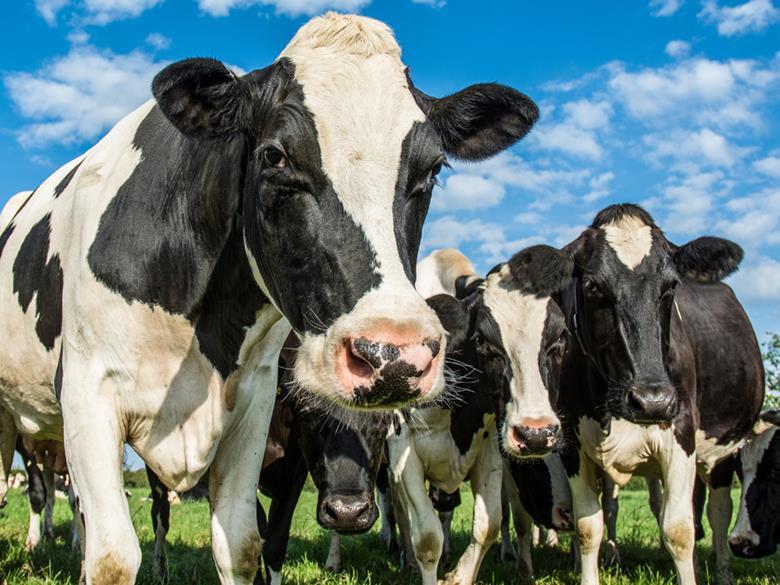
The Dairy Farmers of Canada has been running online advertising that makes some dairy farmers cringe.
The video reveals a drone’s view of Canadian farms as a voice-over reports that “Reaching net-zero greenhouse gas emissions by 2050 takes a lot of work. Who would commit to such a thing?” We see scenes of dairy farmers hard at work and one farmer after another announcing jubilantly, “I’m in.”
Except that a lot of farmers aren’t in. They’re ticked off because to get to net-zero you have to stop doing a lot of farming or figure a way around producing methane emissions (from cattle) and nitrous oxide (from fertilizer). They’ve seen how the Netherlands decided to solve its fertilizer “problem”. That country is forcing 3,000 farms to sell and get out or just stop farming. These farms are what the Dutch government calls “peak” polluters.
The Canadian government has decided it will also reduce nitrous oxide emissions. In our case, we will reduce emissions by 30 per cent by 2030 just for starters and the government tells us that farmers will volunteer to do it. Volunteer?
Farmers can be feisty and many are calling this an attack on farming. And it’s an unnecessary attack, based on two fallacies: the world is burning up and man-made activity is causing it.
But, but, but, what about global warming? Yes, the globe is warming. Here in Ontario, heat units have increased, improving crop conditions and farmers are delighted. And yes, human activity means that factories emit carbon dioxide, a greenhouse gas, which is what you also get from cow flatulence and fertilizer.
And yes, 50 per cent of the world’s population thinks they will be killed by global warming (they prefer to call it climate change) and many believe we only have until 2030 to solve the problem or it will be too late. Many believe that the way to solve what they think is the world’s most important problem is to curtail greenhouse gas emissions. The World Economic Forum is terrified of greenhouse gas emissions and global warming. Many young people are terrified of global warming. Leonardo DiCaprio is terrified of global warming. At the same time, many people couldn’t care less. They don’t see a link between greenhouse gases and runaway rising temperatures. They look at history and see what appears to be a natural or cyclical rhythm of rising and falling global temperature.
There is a smorgasbord of concern between hysteria and nonchalance. I have lived long enough to figure out that more often than not, the most alarming scenarios are simply alarming scenarios and sometimes a long way from the shores of reason. To find the truth of a matter, most curious people run to the facts, to the data, to the best research that’s available. They run to the science. And what it actually tells us, when you go to the scientists not seeking an audience, is that while global temperatures have increased slightly in 100 years, there are many reasons for it, much of it out of our control. But we’re not in a crisis.
Suffice it to say that the mainstream media, surprise, surprise, does a terrible job with the truth since hysterical forecasts make great front page headlines and many reporters live for the front page. The truth isn’t sexy or shocking. Not many reporters get front-page headlines that read, “Slight increase in global warming, we’re going to live.”
One of the world’s most respected climate change skeptics is Copenhagen Business School visiting professor and Hoover Institute fellow at Stanford University, Bjorn Lomborg, author of False Alarm: How Climate Change Panic Costs Us Trillions, Hurts the Poor and Fails to Fix the Planet. Time magazine named him one of the top 100 most influential people in the world, while the Guardian calls him “one of the 50 people who could save the planet.”
Lomborg notes that if we took traffic deaths as seriously as our fear of global warming, we’d be in big trouble. If politicians asked scientists how to reduce the 40,000 vehicle fatalities in the United States each year to get to the target of zero, “One good answer would be to set the national speed limit to three miles per hour,” Lomborg writes. Of course, nobody is asking for zero deaths, we’re trading risk for higher speed so we can get on with our day. Today’s climate change hysteria wants to put the brakes on living free lives.
The way forward is not to attack farming and the oil and gas industry and plastic. The way forward is through innovation, Lomborg argues. In the late 1800s, horse-drawn carriages were everywhere and there was great fear that the city of London, England, would be buried in horse manure. Scientists began working on solutions. The car was invented and the problem was solved.
In the 1960s when cars began to fill the air with smog over Los Angeles, one solution could have been to ban cars. There was a better answer. Innovation. The catalytic converter was invented and air quality improved.
India seemed doomed to starvation until a stubborn scientist found a way for plants to use less energy in their stalks and more in the grain, causing spectacular increases in yield. Lomborg writes that this “green revolution” likely saved one billion people from starvation.
Unfortunately, wind and solar power are inefficient and expensive. Heavy regulations on farming and industry are also expensive, as well as divisive, incredibly ineffective and unnecessary. Fossil fuels, however, are cheap. So, why not start there? Innovation to curb carbon emissions has to come from the oil and gas while supplying the world with energy, Lomborg argues. Great idea.
Too bad the news media and too many politicians only respond to hysteria.




















